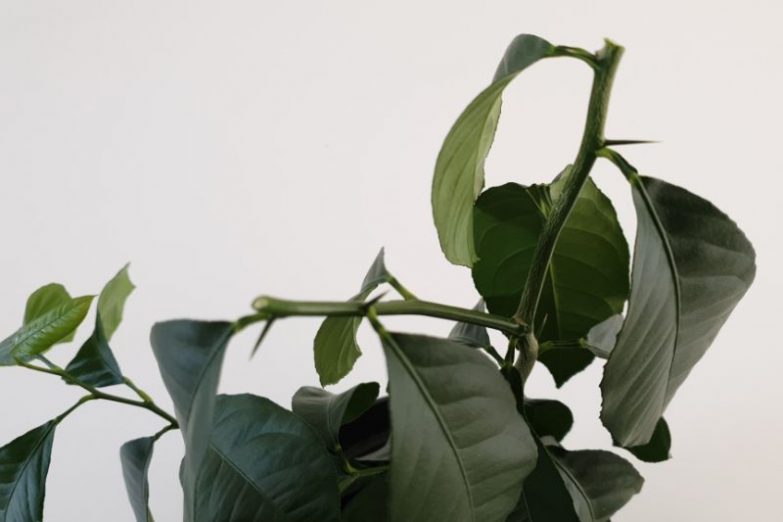Whether for cosmetic reasons or to improve the health of your houseplants, you’re likely to have to do some pruning sooner or later. This article will help you understand how, why and when to prune houseplants to keep them looking great and in perfect health.
How To Prune Houseplants: Most houseplants are best pruned little and often, while they are actively growing. Use sharp, sterile pruners and cut back to just before leaf nodes. Ensure good care after pruning to promote rapid recovery. Prune your houseplants to control plant size, shape, cosmetic appearance or health.
Read on to learn all the specific pruning methods, when to use and any special considerations to have your pruned plants producing new growth in no time.
4 Reasons To Prune Houseplants
Although pruning objectives can vary, there are four basic reasons to prune houseplants.
1. Preserve Plant Health
Pruning to maintain your houseplant’s health involves removing portions of the plant that are unhealthy, or pruning healthy growth to encourage more robust growth in the future.
By removing overgrown foliage, you will improve airflow to the plant, and light will be better able to penetrate all portions of the plant. This actually leads to a fuller and healthier looking houseplant.
Plants that grow indoors can become overgrown, developing thick foliage, which then blocks proper air circulation and light. This can lead to portions of the plant looking unhealthy.
Dead or dying sections of the plant can encourage pest infestation or disease. Removing these not only makes your houseplant look better, but reduces the risk of further problems down the line.
Pruning is also a good opportunity to inspect your plant for any care problems. Damaged, discolored leaves or abnormal growth can signal the need to change your care routine. You can carefully prune these affected areas and adjust your care to promote healthy growth in the future.
2. Plant Training
Pruning gives you the ability to control the height, width and shape of your houseplants.
Before pruning a houseplant, you should consider what shape and size you would like it to be. Over time, you can shape your plant to your liking, letting it grow into a plant that perfectly complements the space it is growing in your home.
A good example of training a houseplant is with the various types of Ficus trees. Ficus have a tendency to develop vertical branches instead of lateral ones, leading to tall, spindly trees. Pruning the vertical branches promotes the development of lateral ones, leading to a fuller and more attractive specimen.
3. Improving Quality Of Stems And Foliage
You can encourage lush and robust new growth in your houseplants by pruning out older growth, which promotes a more compact plant that is well-branched. This is especially true for houseplants like Schefflera, Dracaena, Pothos and Aglaonema.
Many types of foliage plants are grown primarily for their striking leaves and although they might bloom, the flowers are usually insignificant and don’t hold a candle to the elaborate foliage. For example, Aglaonema blooms hold little appeal and are pruned off so the plant can put its energy into the developing foliage.
4. Preventing Hazards
Many houseplants in their natural environments grow much larger than the specimens found inside our homes. This is particularly true of indoor trees, or houseplants such as Monsteras, which can become enormous. Many houseplants will eventually become too tall or wide for their designated area and soon be pressing up against walls and ceilings.
Some houseplants can also become quite top-heavy as when they become large, increasing the risk of toppling over.
You can prune houseplants to achieve a more compact specimen by pruning out some of the branches to reduce the tree’s overall width and height.
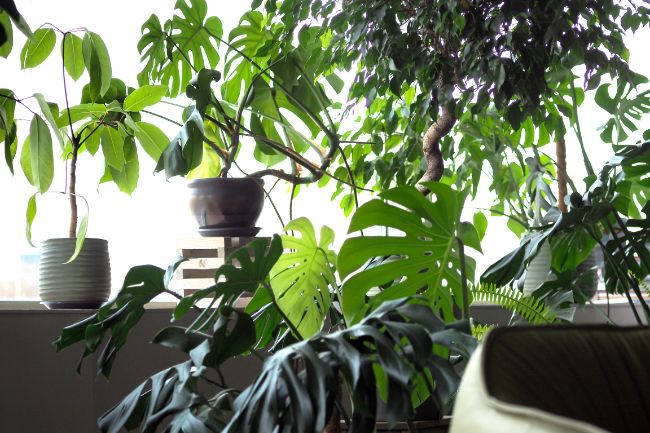
Types Of Pruning
Many types of houseplants will never require pruning other than maybe to remove a dead leaf here and there. Other short-lived annuals and some perennials are discarded after the blooming ceases. However, there are times when a bit of pruning tames an overgrown plant, improves the looks of an ailing one or will make a houseplant look better.
There are four main types of pruning that we will cover.
- Maintenance pruning
- Hard pruning
- Deadheading
- Leaf pruning
1. Maintenance Pruning
Maintenance pruning removes only small portions of the houseplant at a time. This can be done by pinching or using pruners to remove new growth growing vertically or laterally from the main body of the plant. As only small portions of stems are removed, the plant looks basically the same as it did before the stems were pinched.
You can use your thumb and index finger, a sharp knife or scissors and pinch the soft growth at the end of a stem back to the next set of leaves or buds. This will encourage side shoots to form along the stem. In fact, you can even pinch off the ends of side shoots to encourage even more to form, leading to a fuller plant.
Pinching works well for herbaceous plants, which includes various vines and climbers. Some of the houseplants that benefit from pinching include:
- Coleus
- Nerve Plant (Fittonia albivensis)
- Goldfish plant (Columnea gloriosa)
- Heartleaf Philodendron (Philodendron scandens)
- Wandering Jew (Tradescantia zebrina)
Instead of having a long stem, pinching promotes a bushier plant, as it develops additional side shoots and the production of more blooms, if the houseplant flowers.
Basic Steps For Maintenance Pruning
- Gently hold the stem near the tip’s end where you will be pinching off.
- Using your other hand’s thumb and index finger, a pair of scissors, or sharp knife, pinch off the tip of the stem right above a set of leaves or node. Make sure your pruning tool blades are clean to prevent the transfer of diseases or pests.
- Continue pinching the end tips off the remaining stems and side shoots, creating a bushier plant when new growth appears.
2. Hard Pruning
Hard pruning is used to significantly cut back an overgrown plant, reshape a plant, or remove branches that have become leggy or grown out from the body of the plant.
When doing hard pruning, it’s best to wait until spring when the plant starts its active growth again. Although hard pruning is stressful to the plant, the pruned bare branches and stems will fill in with new foliage quickly.
Hard pruning works well to make a plant more symmetrical, houseplants with bare stems bushier, and those that are too large more compact. It works well used on herbaceous perennials, indoor shrubs, and trees.
Make your cuts using sterilized hand clippers or a sharp knife, cutting just above a bud or leaf node. You typically should remove around 1/3 to 1/2 of a stem or branch. If the houseplant has sections of old, diseased or awkwardly positioned growth, you can safely prune it off.
Some plant examples where hard pruning can help to maintain plant shape well include:
- Schefflera
- Ficus species
- Crassula ovata (Jade Plants)
- Hibiscus
- Vines: Fast-growing climbers that produce an abundance of annual growth can have the tendency to become a tangled mess. Cutting them back yearly can be beneficial, as it allows for more airflow and light to reach the stems and it can make the plant look better.
If the vine is climbing on a structure, allow its woody central framework to remain as is and cut back the side shoots. Examples of climbers benefitting from hard pruning include:
- Philodendron scandens
- Chinese Jasmine
- English Ivy
- Pothos
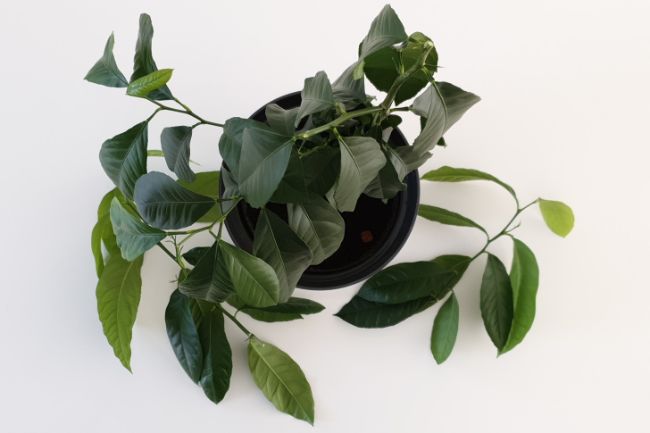
Steps For Hard Pruning
- Before making your cuts, look the plant over to decide what branches or stems need pruning to achieve the desired size and shape.
- Make your pruning cut about 3mm to 4mm above a bud or leaf node and at a slight angle in the direction of the bud, trimming off the desired section of branch or stem. Clean hand pruners work well for cutting thin branches.
- If you are pruning for a bushier plant, start slow by pruning the leggy branches back by no more than 10 to 20 percent. After a couple of weeks to a month, you can continue pruning side branches that will produce a thicker plant.
- Prune off any dead branches or stems at the base of the plant or to the main stem, when pruning trees.
- For indoor trees, remove the weaker branch when two are crossing or two are developing from the same branch, leaving about a 2cm section where the branch attached to the main stem. Use loppers or a pruning saw for larger branches.
3. Deadheading Spent Blooms
Removing spent flowers not only gives the plant a tidier appearance, but it also allows the plant to put all its energy into producing additional blooms instead of making seeds. Deadheading spent flowers also typically results in larger blooms.
However, some flowering plants like hibiscus are self-cleaning and the flower drops from the plant once spent, so there’s no need to deadhead.
In addition, some foliage plants like Aglaonema are grown primarily for their colorful or elaborate leaves, producing only insignificant blooms. The flowers are usually pruned off so the plant can put all its energy into developing the eye-catching foliage.
You can deadhead spent flowers by using a clean pair of scissors or hand clippers and clipping the flower head from the plant.
4. Trimming Leaves
Many times, it’s easy to see your houseplant isn’t the happiest camper on the block by looking at its leaves. Plant stress from improper environmental conditions and care, as well as pest or disease problems, can show up on the foliage.
Foliage can show the effects through brown leaf tips, as well as entire leaves turning brown or yellow. Of course, the leaf problems leave your houseplant looking anything but attractive.
Since everything from too much fertilizer or sunlight, sucking pests to not enough water can be the cause of your leaf problems, it’s best to try to figure out what caused the situation with the foliage in the first place.
Trimming A Leaf Portion
If the tips or small sections of the leaves are turning brown or yellow, you may consider trimming the affected section off. Whether you should or not depends on the cause and on your preference.
If you think the damage is related to a disease, you should certainly remove the affected section, leaving a small margin of healthy leaf. If the damage is due to other causes, there is no need to remove the affected part unless you wish to.
Houseplants don’t have to look perfect all the time, so it you have a few brown tips or crispy leaf edges, it is ok to leave them alone. This is what I tend to do.
If you’d like your plant to look a little more pristine, you can carefully trim off the affected leaf section. If you cut into healthy leaf, a brown edge will often appear, so I would advise trimming most of the affected section off, but leave a small margin of brown or yellow. It won’t be perfect, but it’s as close as you are likely to get.
Longer term, it’s best to try to identify why your houseplant is getting leaf problems and take steps to fix these, so that new growth will stay lush and healthy.
Trimming Off A Leaf
If the entire leaf is unsightly or dead, you can use clean scissors or hand pruners to trim off the entire leaf and stem from the branch. If many leaves are affected, try removing a portion of them first and wait a few weeks to ensure that the plant starts to produce healthy new growth. Remove the remainder of the affected leaves over time.
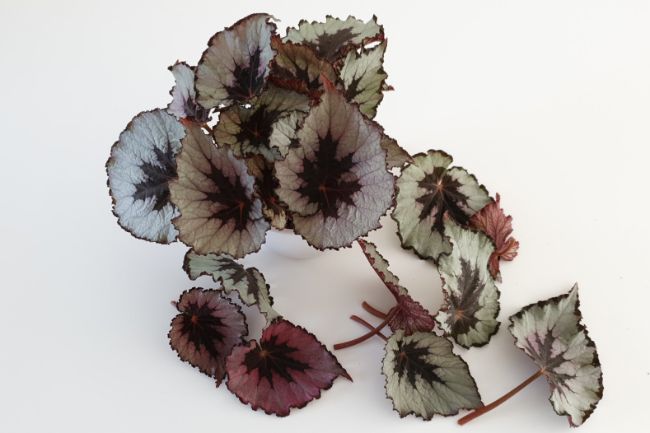
Basic Pruning Tools
Unless you are growing larger houseplants that develop into trees or shrubs, you don’t need a large arsenal of tools to prune houseplants. In fact, you can even use your fingers to pinch off the tips of many fleshy plants.
Usually a pair of hand clippers or snips and even common scissors will work in snipping off smaller stems and branches. Additionally, you want to make sure the pruning tool can cut cleanly through the branch or stem and not tear it, as that can open the section up to disease problems.
However, for larger indoor plants like shrubs or trees, you will need loppers to cut through the bigger branches. The larger and beefier blades will make a quick and clean cut through the larger areas of bark.
Expert Tip:
Always be sure to sterilize your pruning tool blades before you prune houseplants. This assures you won’t be transferring any diseases or pest problems to the plant. You can easily sterilize your tool’s blades by wiping them off with alcohol or a household disinfectant.
How To Prune Houseplants – The Basics
When it comes to proper pruning techniques and schedules, in regards to the vast majority of houseplants, there are some basic rules you can follow to assure you maintain a healthy and good-looking plant.
When To Prune Houseplants
The best time to prune houseplants is usually once new growth starts appearing in springtime. However, plants like Wandering Jew and Coleus that require pinching frequently can be pinched throughout the entire growing season.
Additionally, diseased or damaged foliage or wood can be removed throughout the year. Remove the affected section by making your cuts back into healthy sections of the wood.
When it comes to cutting back woody houseplants that produce flowers on new growth like hibiscus or fuchsia, early spring is best.
However, houseplants that flower on older growth like Stephanotis should be cut back right after blooming ceases. This allows enough time for the new wood to mature so it’s ready for next year’s round of flowers.
Green plants grown primarily for their foliage should also be tidied up in spring. Evergreens known for their tough nature like Ivy can be pruned year-round.
When the desired growing conditions of the pruned plant are met, pruning should produce new healthy growth.
Should You Prune Houseplants In Fall And Winter?
The vast majority of plants grown indoors and outside go through a period of dormancy starting in fall and lasting through winter. During this time, the plant’s growth slows or almost stops and new growth won’t appear until conditions warm in spring.
Therefore, it’s usually not necessary to prune houseplants in fall or winter. However, there are exceptions to waiting until spring to do your pruning.
- It’s OK to prune off dead or dying foliage, as well as dead, broken or diseased branches anytime throughout the year.
- Fast-growing climbers like Wandering Jew can be pinched to control their size and shape year-round.
- Tough evergreens that grow quickly like Ivies can be pruned all year.
If you plan cutting a plant back severely, it’s probably best to wait until spring when the plant is no longer dormant to do the pruning.
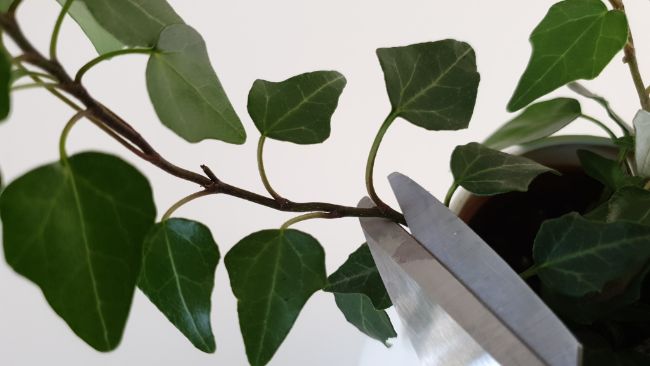
How Much And How Often To Prune Houseplants
It is less stressful for your houseplant to be pruned a little at a time rather than doing one extreme prune because the plant was allowed to become severely overgrown. The plant keeps its green good looks with the pruning barely noticeable when you pinch or snip off the tips of branches and stems throughout the year.
Additionally, periodic light pruning won’t have you dealing with a multitude of bare stems caused by hard pruning, leaving the houseplant looking a bit worse for wear until new growth appears.
Cutting each stem or branch back by one-quarter to one-third is standard practice and causes the least amount of stress to the houseplant. However, if the houseplant is extremely overgrown and in need of some serious rejuvenation pruning to bring it back into shape, cutting back by more than half might be required.
Making The Cut
Although using clean pruning tool blades to make your pruning cuts is essential in preventing transferring an unwanted disease or pest to your houseplant, how you make the cut is significant too.
The following tips will assure the area around the cut remains healthy and productive:
- Make your cut at a 45-degree angle away from the developing bud or leaf node, to help water flow away from the bud and not collect on top of a pruned flat surface.
- Do not make your cut too close to a leaf node or bud to prevent damage.
- Don’t cut too far from a leaf node or bud because the end will die leaving an unsightly stump.
- If pruning a completely bare branch or stem, make your cut above a leaf scar.
Pruning Aftercare
If your houseplant requires quite a bit of trimming, giving it appropriate aftercare assures its quick recovery and production of new growth. Pruning produces short-term stress for the plant, so it is important to avoid causing additional stress with other aspects of care.
Aftercare that gets your pruned houseplant off to the best start includes:
- Avoid excessively bright conditions. Plants normally kept in direct sunlight are best moved to bright, indirect light for a few weeks to reduce potential stress from excess sun exposure.
- If your plant is normally kept in a darker area, try moving it to somewhere a little brighter. This will accelerate photosynthesis and boost the development of new growth. Just be aware of some houseplants that dislike being moved such as Ficus benjamina.
- Avoid the temptation to repot at the same time as pruning your houseplants. Repotting inevitably leads to root damage, which causes major stress to your plants on top of that caused by pruning. Leave at least 4 weeks between pruning and repotting for most houseplants.
- Avoid fertilizing your houseplant for about 4 weeks after pruning. It’s so easy to overdo the fertilizer, which impact root health and increase plant stress. Let your freshly pruned plant regroup first, then resume your normal fertilizing regime.
- Due to the reduction in foliage, the plant’s water needs will probably be lower than before it was pruned. Adjust your watering schedule as needed for the first few weeks while the pruned plant starts developing new growth.
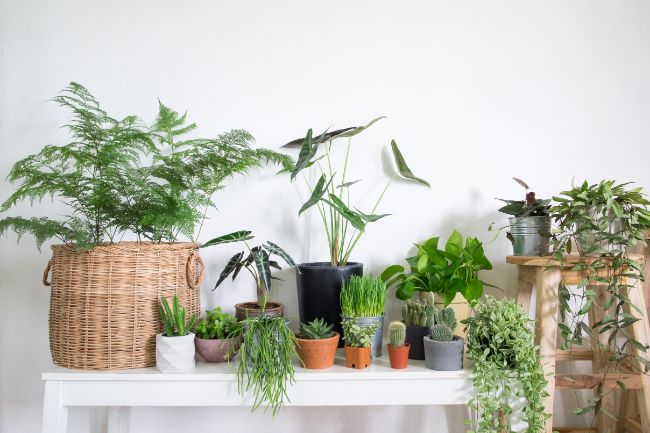
Should You Prune Houseplants When They Are Sickly?
Whether due to an outbreak of disease or pests, or simply because of lack of care, you may find your houseplants looking a little unhealthy. As pruning houseplants will lead to additional stress, it is usually best to improve general care and fix any problems before pruning.
The exception to this is when a plant has a disease. Treat the disease and prune away affected portions of the plant as soon as possible to eliminate the disease. This will cause considerable stress for your plant, but it is usually the best option to increase the chance of survival and recovery.
For other problems with plant care, or if you identify a pest infestation, fix these issues first before you even think about pruning. Wait for at least 4-6 weeks to let the plant start to develop some new, healthy growth, and only then start to prune your plant.
Take things slowly, removing a maximum of 10-20% of the plant’s foliage at a time. You will put the plant through less stress if you start small and incrementally prune over a few weeks or months.
Houseplants With Special Pruning Requirements
Not all the basic rules for proper pruning always fit every variety of plant and some have special pruning requirements to keep their growth robust and healthy. In fact, improper pruning can be detrimental to some plants and even lead to their death. Use this general advice, along with any specific instructions for individual plants to keep your indoor plants well-groomed and looking great.

